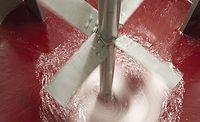Pinpointing key steps that evaluate potential cleaning agents for specific tasks, Standard D 6361, Guide for Selecting Cleaning Agents and Processes, is available from American Society for Testing and Materials (ASTM). It allows the industrial or manufacturing engineer to customize selection of cleaning agents and processes based on the part’s material, size, shape and reason to be cleaned. When selected, appropriate tests are then suggested for the cleaner’s physical and chemical properties, material compatibility and applicable processes.
“The engineer ultimately makes the final decision on the cleaner based on the results of the evaluations and on individual areas of concern including cost, and environmental, safety and health issues,” says Kevin McGill, consultant to the Army on Pollution Prevention and Corrosion Engineering, chairman of the ASTM subcommittee, and president, Prospective Technology, Inc., Columbia, Md. “Anyone who needs to select a cleaner can examine their reason for cleaning, the material of the part being cleaned, and choose the appropriate evaluation criteria in the guide. They are not going to run into problems of not having sufficient cleanliness of their parts and are not going to run into material-compatibility issues.”
D 6361 originated as a U.S. Army Acquisition Pollution Prevention Support Office protocol, and was further developed into a guide through ASTM Subcommittee D26.03 on Cold Cleaning, part of Committee D26 on Halogenated Organic Solvents and Fire Extinguishing Agents.
Developers of the guide include Department of Defense users such as the Corpus Christi Army Depot in Texas, who used this methodology extensively for several years. Representing industry were users and manufacturers of cleaning agents. “We need to get this message to users outside the Army community,” McGill adds. “It is very good guidance for anyone selecting and making changes in cleaning agents.”
ASTM Committee D26 meets June 21-22 in Toronto. Committee D26 is one of 129 ASTM technical standards-writing committees. Organized in 1898, ASTM is one of the largest voluntary standards-development organizations in the world.
ASTM standards are available by calling 610-832-9585, or by visiting www.astm.org. For meeting or membership information, contact John Pallante at 610-832-9737.

